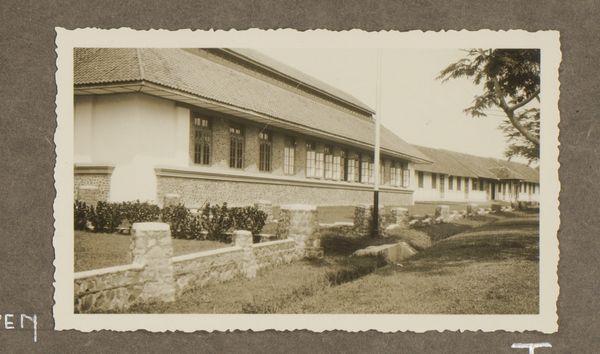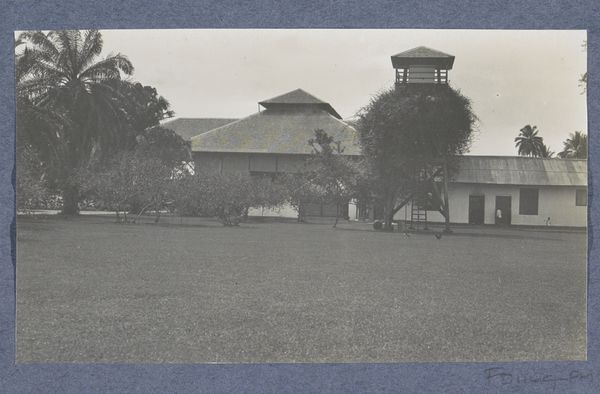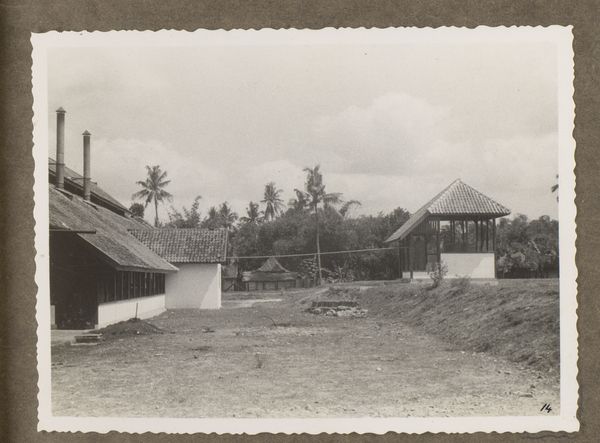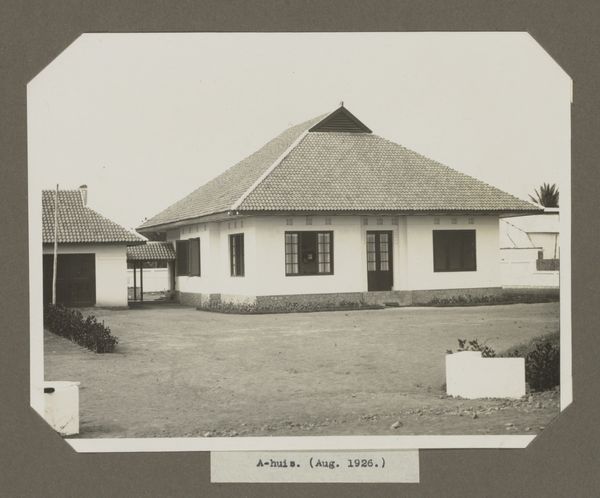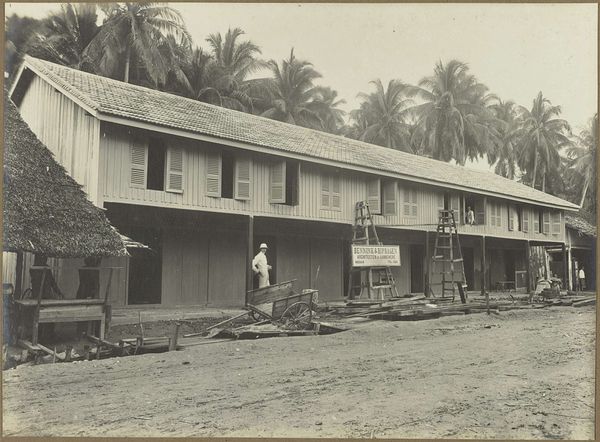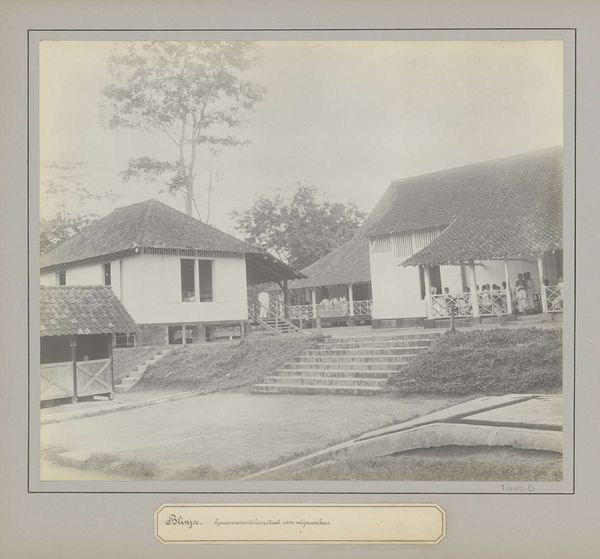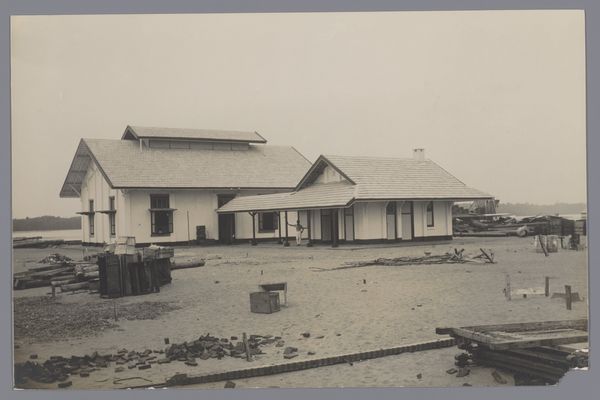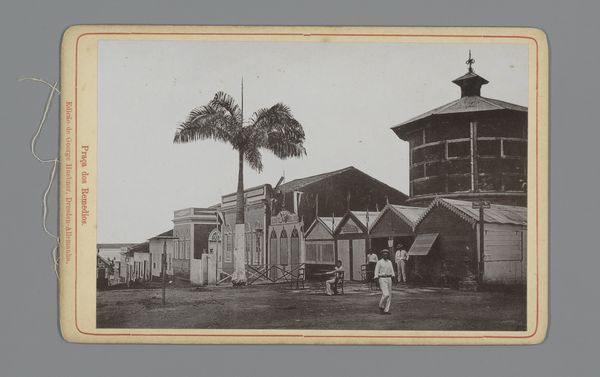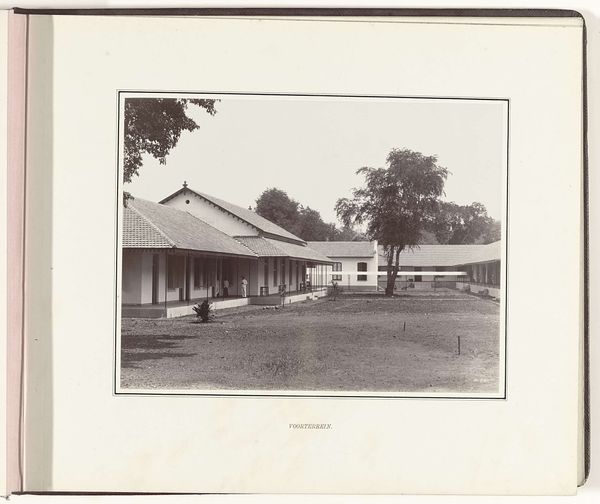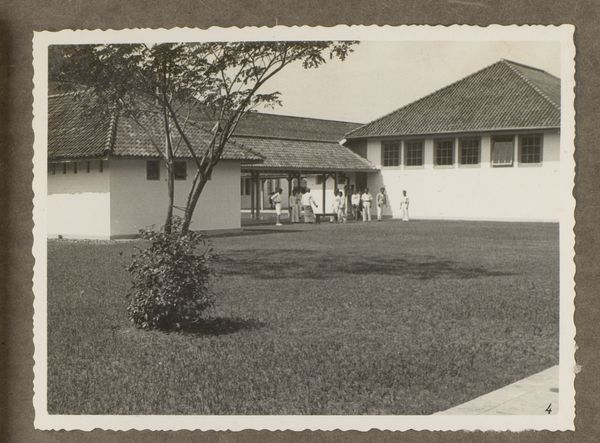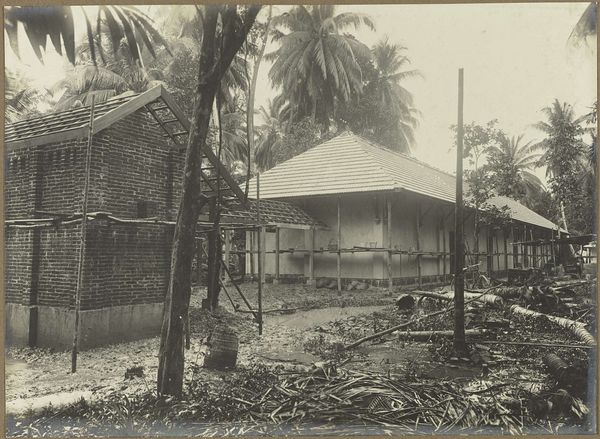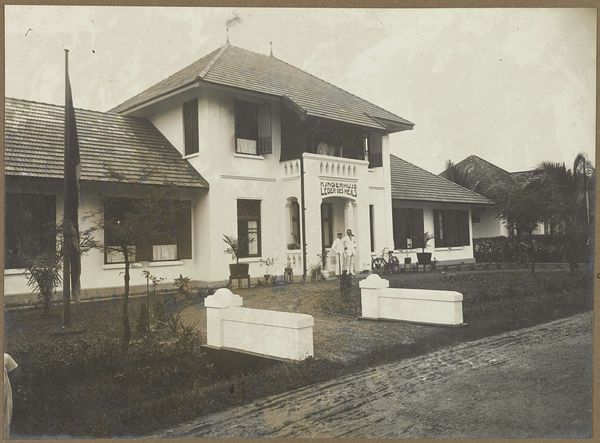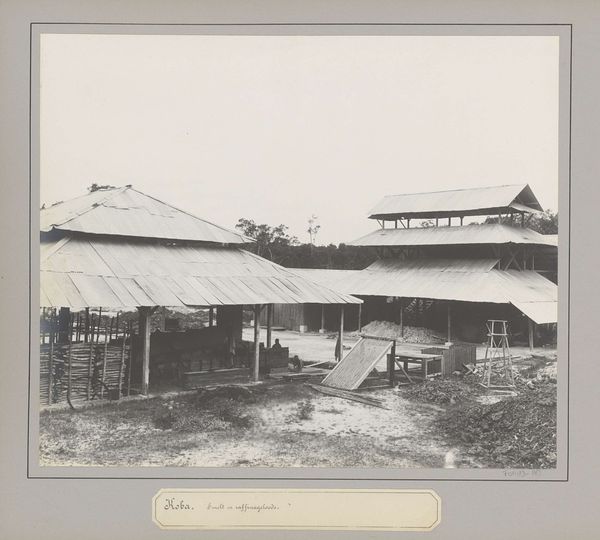
photography
#
dutch-golden-age
#
landscape
#
photography
#
cityscape
Dimensions: height 70 mm, width 111 mm
Copyright: Rijks Museum: Open Domain
Editor: Here we have a vintage photograph titled "Frontgebouwen van de Technische School te Bandoeng," taken in 1933. The sepia tones give it such a nostalgic feel. It seems almost…static, with the buildings presented so formally. What strikes you most when you look at it? Curator: I see layers of meaning embedded within its seemingly simple composition. Notice how the photograph is taken at eye level, presenting the Technical School not as a grandiose institution but as an accessible space? What emotions are conjured up by this very specific presentation? Editor: It does feel quite welcoming, even humble. Perhaps hinting at its role in educating the local population? Curator: Precisely. Now, consider the architectural style itself – it blends European and Indonesian elements, which would've conveyed power, modernity, and perhaps even cultural negotiation. The Dutch flag is proudly positioned to the right in the scene, subtly hinting at a statement of political power. How does this all inform your understanding of cultural memory? Editor: I hadn’t considered how the architecture embodies a specific power dynamic. Seeing the photograph as more than just a historical document, but as a cultural artifact, has certainly given me a fresh perspective. Curator: Yes, even something as simple as a building's facade, and its photographic rendering, can be an ideological landscape. Consider how such seemingly "neutral" imagery reinforces historical power structures and colonial realities, making you aware of its cultural context and narrative in the passage of time. Editor: That's fascinating, I definitely have so much more to think about regarding colonial depictions and intended purposes of architectural design. Thanks for opening my eyes to that!
Comments
No comments
Be the first to comment and join the conversation on the ultimate creative platform.
